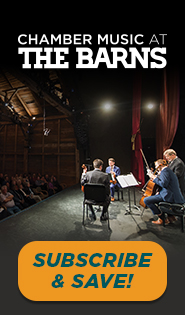Annapolis Symphony continues to spread its wings with new repertoire

José-Luis Novo conducted the Annapolis Symphony Orchestra Friday night.
José-Luis Novo was appointed music director of the Annapolis Symphony Orchestra in 2005. He has given some new life to this ensemble based in Maryland’s capital, producing a CD on a private label in 2008, for example. For their latest concert on Friday night, a supportive audience filled the orchestra’s small auditorium, in the former high school now known as Maryland Hall for the Creative Arts.
Novo continued his mission to expand the orchestra’s repertory, with three of the four pieces on this program being performed by the ASO for the first time. Novo led a crisply articulated performance of Beethoven’s First Symphony, a work premiered in 1800 at a concert presenting Beethoven to his adopted city, Vienna. It is an accomplished work in the style of Mozart and Haydn, by a composer in his late 20s, but with that Beethoven edge of melodic concision and sharp accents.
The first movement revealed some weaknesses in the string sections, intonation issues in the cellos and basses here and there and some ensemble trouble in the violins, especially in the first theme. On the other hand the woodwinds, especially flute and oboe, had beautiful solos in the more demure second theme. Novo took care with the articulation of the subject in the charming contrapuntal theme of the second movement. If the tempo felt a little conservative in speed, it led to sweet results in the lilting variations.
Strong brass added brilliance to the sly interplay of accents in the Menuetto, set off by the reedy, folk-like character of the trio. Similar ensemble issues surfaced throughout the finale, especially in the fast upward scalar patterns Beethoven calls for throughout the orchestra.
The most recent of the repertoire novelties was the Trumpet Concerto No. 1 by Estonian composer Eino Tamberg, a piece not performed by any area orchestra in recent memory. Composed in 1972, it has echoes of the sardonic, totalitarian style of Shostakovich, including a chromatic figure in the fast part of the first movement that is close to that composer’s musical signature (DSCH).
ASO principal trumpeter Christopher Sala had some nervous misses in the exposed opening of the solo part, marked by a perilous rising seventh figure. He had a brilliant, precise sound in the faster sections of the first movement, rhythmically taut and obsessive. In the second movement he floated a silvery tone above the gently dancing orchestra in the opening Lento section. Menacing drums of various kinds, again recalling Shostakovich, added a military chill to the Con moto section. Sala’s subdued, attractive sound with the mute in brought the movement to a bluesy conclusion.
Novo’s clarity of gesture led the orchestra through a confident reading of the manic third movement, with the trumpet intersecting the orchestral metrical shift. Sala’s breath support seemed endless on the final sustained note of the piece.
Novo waited a long time for the audience to quiet down after intermission, even after he turned and asked for silence. That quietude was important for the only piece the orchestra had played before, Samuel Barber’s Adagio for Strings. The strings had their strongest outing of the evening, lush even into the super-high climax.
Less successful was Schubert’s Fourth Symphony (“Tragic”). Though composed when he was just 19 years old, the work’s premiere came long after his death. Novo drew out the slow opening of the first movement, savoring its dissonance so much that it became dreary more than tragic. More coordination issues cropped up across the orchestra although for the most part the playing was fast and brilliant, conducted with energy and alacrity.
The second movement was engaging with more consistent intonation, although it became soporific by the end without much variation. The third movement, also a Menuetto, bore many similarities to Beethoven’s third movement, a comparison encouraged by this program, with the older Beethoven coming out on top. The brass and timpani added a blare of sound to the fourth movement, where the occasionally chromatic lines caused more intonation disagreements, capping an ambitious if not optimally executed program.
The program will be repeated 8 p.m. Saturday. annapolissymphony.org; 410-263-0907.

